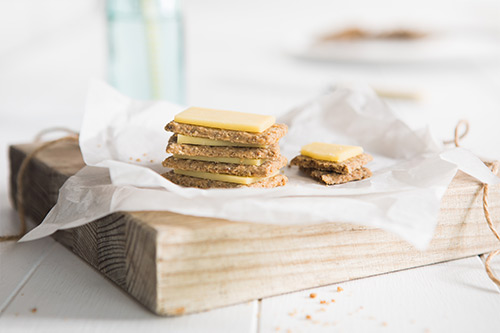Wholegrains are nutrient powerhouses packed with fibre, vitamins and minerals which makes them a great choice to include each day. Before we dive into some simple hacks to boost your wholegrain intake, let’s first go through what wholegrains are and how much you should be eating.
A ‘wholegrain’ is a grain that still has all of its natural parts intact. It consists of three key parts, each offering unique health benefits:
Wholegrains come in many forms including wholemeal and wholegrain breads, oats, wholemeal pasta, brown rice, barley, corn, popcorn, cracked wheat (burghul), rye, buckwheat, millet, sorghum and quinoa.
Whereas ‘refined’ grains are grains that have had one or more of their natural parts removed during processing. This also strips away many nutrients including fibre, vitamins, minerals and phytochemicals. Examples include white bread, white rice, regular pasta, tortillas made with white flour or cornmeal.
The Australian Dietary Guidelines recommend that adults should eat around 4-6 serves of different grain (cereal) foods each day, and children should have between 4-7 serves. Most of these should be wholegrain and high-fibre varieties.
Wholegrains are rich in nutrients that play an important role in digestive health. They help you feel fuller for longer, which can discourage overeating and lower your risk of developing chronic diseases such as type 2 diabetes, heart disease and cancer. Now, let’s dive into some simple hacks to help boost your wholegrain intake.
Making simple swaps from everyday foods to wholegrain versions can boost your intake of fibre, vitamins and minerals. Check out these suggestions:

Top tip: if you’re not ready to switch fully to brown rice or wholemeal pasta, start by mixing half white and half brown/wholemeal. This way you can get used to the flavour gradually.
Get creative and add wholegrains to dishes.

Did you know? Wholemeal flour has 4x more fibre and twice as much iron and zinc compared to white flour.
Get wholegrain savvy with your snacks and make every bite count!

Several grains are naturally gluten-free, including buckwheat, brown rice, corn, popcorn, amaranth, quinoa, oats, sorghum and millet.
⚠ Important: Always check the label to make sure the product is clearly marked gluten-free and processed in a gluten-free environment.
When adding more fibre to your diet, take it slowly to avoid possible tummy discomfort and be sure to drink plenty of water.
© Cancer Council NSW 2024 Head Office Address: 153 Dowling Street, Woolloomooloo NSW 2011. Cancer Council NSW is registered with the Australian Taxation Office as an Income Tax Exempt Charity: Charitable Fundraising Authority No. 18521.
Some images on this site have been supplied by Cancer Council Western Australia's Crunch & Sip website
Cancer Council NSW acknowledges the traditional custodians of the land on which we live and work. We pay our respects to the elders past and present and extend that respect to all other Aboriginal and Torres Strait Islander peoples.
Aboriginal Respect Symbol designed by Marcus Lee Design for Cancer Council NSW.
Sign up for FREE recipes, practical tips and up-to-date cancer prevention information in your inbox each month.
Sign up for FREE recipes, practical tips and up-to-date cancer prevention information in your inbox each month.
We will send this recipe to your inbox. Read our privacy collection statement first.